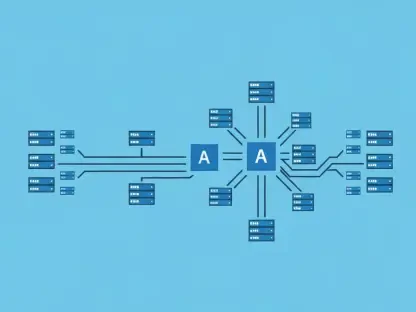In a landscape where technology evolves at breakneck speed, a recent declaration by Ethereum co-founder Vitalik Buterin has captured the attention of the crypto community and beyond, highlighting his commitment to shaping the future of decentralized systems. On August 12, through a post on Twitter (@VitalikButerin), Buterin made a bold statement, pledging his support exclusively to open-source technologies and elaborating on this stance in a blog post on vitalik.eth.limo. This isn’t merely a personal viewpoint but a reflection of Ethereum’s core ethos, emphasizing transparency and community collaboration. At a time when debates over open versus closed systems are intensifying, particularly in fields like artificial intelligence (AI) and blockchain, Buterin’s words resonate as a powerful reminder of what has long defined Ethereum’s identity. This development prompts a deeper look into how such advocacy might influence not only market sentiment for ETH but also the broader trajectory of decentralized technologies, setting the stage for meaningful discussions among developers, traders, and institutional players.
The Core of Open-Source Advocacy
Ethereum’s Foundational Values
Ethereum has always stood as a beacon of decentralization, a principle deeply embedded in its ecosystem through open-source clients like Geth, Nethermind, and Prysm, which are publicly accessible and driven by community contributions. Buterin’s recent affirmation of support for open-source technologies underscores this unwavering commitment to transparency, aligning perfectly with the platform’s historical focus on fostering trust through shared code and collaborative development. This approach has not only built a robust technical foundation but also cultivated a loyal following among developers who value the ability to audit, modify, and enhance the system. As blockchain continues to intersect with emerging fields, this dedication to open principles positions Ethereum as a trusted player in a tech world often criticized for opacity, reinforcing its appeal to those who prioritize ethical innovation over proprietary control.
Beyond the technical implications, this stance serves as a cultural cornerstone for Ethereum, shaping how the platform is perceived by both insiders and newcomers to the crypto space. The open-source model encourages a global network of contributors to participate in refining the technology, ensuring that no single entity holds undue power over its direction. This democratic structure is evident in the diversity of client implementations that keep Ethereum resilient against potential vulnerabilities or centralized failures. By publicly championing these values, Buterin not only reiterates a long-standing promise but also challenges other blockchain projects to adopt similar transparency, potentially setting a higher standard across the industry. For stakeholders, this is a signal that Ethereum remains a platform rooted in accessibility, which could further solidify its reputation as a leader in decentralized innovation.
Narrative Over Immediate Impact
While Buterin’s statement carries significant weight, it does not herald immediate changes to Ethereum’s protocol or token economics, functioning instead as a narrative driver that shapes perceptions rather than on-chain actions. This distinction is crucial for understanding its role in the ecosystem, as it acts more as a sentiment indicator than a direct catalyst for technical upgrades or market shifts. The absence of concrete roadmap adjustments tied to this advocacy suggests that its influence lies in reinforcing Ethereum’s ideological stance, appealing to a community that values principles over short-term developments. For developers and long-term investors, this narrative can strengthen confidence in Ethereum’s direction, even if it doesn’t prompt immediate alterations to the blockchain’s operational framework.
Moreover, this focus on narrative over tangible updates highlights the power of thought leadership in the crypto space, where public statements from key figures can resonate deeply with market participants. Buterin’s emphasis on open-source ideals may not alter code overnight, but it subtly shifts the conversation toward long-term trust and sustainability, themes that resonate with institutional players entering the blockchain arena. Traders and analysts might find limited actionable data in this statement alone, yet the broader implications could gradually influence how Ethereum is positioned against competitors who may prioritize proprietary systems. This narrative, therefore, serves as a reminder of the intangible yet potent force of ethos in driving adoption and loyalty, encouraging stakeholders to look beyond daily price fluctuations to the underlying values that define Ethereum’s appeal.
Market Implications for ETH Traders
Short-Term Trading Opportunities and Risks
Buterin’s endorsements have historically triggered short-term price spikes for ETH, often accompanied by surges in trading volume as the crypto community and media amplify the message. This pattern stems from the resonance of his statements with core blockchain enthusiasts who see such advocacy as a validation of their investment in Ethereum’s vision. Traders monitoring social media buzz and on-chain metrics, such as the number of active addresses, might spot opportunities to capitalize on momentum if positive sentiment builds in the wake of this open-source declaration. However, caution is advised, as the lack of immediate protocol changes could limit the duration of any price uptick, making timing critical for those looking to enter or exit positions based on this news.
On the flip side, the risks of volatility loom large, particularly if the market misinterprets Buterin’s stance as a critique of closed-source tech giants or if broader tech sector dynamics shift unfavorably. Such misreadings could lead to downward pressure on ETH’s price, especially if sentiment sours or if corrections in related industries spill over into crypto markets. Traders would benefit from employing technical analysis tools like the Relative Strength Index (RSI) to gauge overbought or oversold conditions, while also tracking institutional flows through platforms that monitor whale activity. The interplay of hype and uncertainty underscores the need for a balanced approach, ensuring that short-term strategies account for both the potential for quick gains and the pitfalls of sudden reversals driven by external narratives or market overreactions.
Long-Term Sentiment and Institutional Appeal
Looking beyond immediate market fluctuations, the open-source narrative bolstered by Buterin’s statement could significantly enhance Ethereum’s appeal to institutional investors who prioritize sustainable and transparent blockchain solutions. As more traditional financial entities explore decentralized technologies, Ethereum’s commitment to community-driven development stands out as a marker of reliability and ethical grounding. This alignment with values of trust and accessibility might not yield instant price jumps but could gradually draw in long-term capital, particularly from firms seeking to align with platforms that mitigate risks associated with centralized control or hidden vulnerabilities. Such interest may solidify Ethereum’s position as a cornerstone of institutional crypto portfolios.
Furthermore, this narrative of transparency ties into broader trends where environmental, social, and governance (ESG) criteria are becoming critical for investment decisions, even in the crypto realm. Ethereum’s open-source ethos could be seen as a governance strength, appealing to stakeholders who value accountability over short-term profits. For ETH holders, this suggests potential for sustained bullish sentiment if institutional adoption accelerates, reinforcing the idea that fundamental principles can translate into enduring market value. Staking and yield farming on platforms that echo these open ideals might also gain traction, offering avenues for passive income that align with Ethereum’s vision. This long-term perspective encourages a shift from speculative trading to strategic holding, reflecting confidence in the platform’s ideological and practical staying power.
Broader Tech Intersections and Opportunities
Blockchain and AI Synergy
The intersection of blockchain and AI represents one of the most dynamic frontiers in technology, and Buterin’s advocacy for open-source principles arrives at a moment when debates over transparency in both fields are intensifying. Ethereum’s positioning as a leader in ethical tech innovation could amplify its relevance in this space, especially as AI-driven solutions increasingly integrate with decentralized networks for data integrity and security. If Ethereum leverages its open-source foundation to attract developers building AI-blockchain applications, it could emerge as a preferred platform for projects prioritizing trust and auditability. This synergy might also influence related cryptocurrencies focused on AI, such as FET, creating potential cross-market trading opportunities for investors attuned to these overlapping trends.
Additionally, the emphasis on open-source models in both blockchain and AI could set Ethereum apart from competitors who adopt more proprietary approaches, offering a competitive edge in attracting partnerships and talent. The growing scrutiny over closed systems in AI, where concerns about bias and control dominate discussions, parallels blockchain’s own history of advocating for decentralization. Ethereum’s alignment with these values might encourage collaborations that enhance its ecosystem, from decentralized AI training models to transparent data marketplaces. For market participants, this opens up possibilities for diversified strategies, such as pairing ETH with AI-focused tokens or even traditional tech equities experiencing AI-driven growth, reflecting a broader convergence of innovation that could redefine investment landscapes over time.
Cross-Market Potential and Diversified Strategies
Buterin’s focus on open-source ideals also invites consideration of how Ethereum’s narrative might correlate with traditional markets, particularly tech indices like the Nasdaq, which often reflect rallies driven by AI and digital transformation. As institutional investors increasingly seek exposure to both crypto and conventional assets, Ethereum’s reputation for transparency could make it a compelling bridge between these worlds. Savvy investors might explore diversified portfolios that blend ETH with equities tied to tech innovation, optimizing returns by capitalizing on parallel growth trends. This approach recognizes that Ethereum’s value proposition extends beyond the crypto sphere, potentially influencing broader financial strategies as blockchain gains mainstream traction.
Moreover, the ripple effects of this open-source advocacy could inspire adjacent sectors within crypto to adopt similar principles, fostering a network of transparent technologies that enhance Ethereum’s ecosystem. For traders and long-term holders, this suggests opportunities in monitoring not just ETH but also projects and tokens that align with these values, potentially yielding benefits through paired trading or thematic investments. The emphasis on ethical tech might also prompt regulatory bodies to view Ethereum more favorably, easing barriers to adoption in conservative markets. As these cross-market dynamics unfold, the importance of staying informed on both blockchain-specific developments and wider tech trends becomes clear, equipping stakeholders with the insights needed to navigate an increasingly interconnected financial landscape.
Reflecting on a Transparent Path Forward
Looking back, Vitalik Buterin’s emphatic support for open-source technologies on August 12 marked a moment of clarity for Ethereum’s identity in a crowded tech arena. This declaration, though not tied to immediate technical shifts, echoed through the crypto community as a reaffirmation of values that have long guided the platform. It reminded traders and developers alike of the power of transparency in building trust, while subtly influencing how Ethereum is perceived against a backdrop of competing ideologies. The discussions it sparked highlighted the platform’s potential to lead in ethical innovation, setting a tone of optimism for its role in shaping decentralized systems. Moving forward, stakeholders are encouraged to monitor sentiment closely, leveraging tools like on-chain analytics to anticipate market shifts while exploring staking or cross-sector investments aligned with these principles. By embracing this narrative, both short-term players and long-term visionaries can position themselves to benefit from Ethereum’s enduring commitment to an open, collaborative future.









